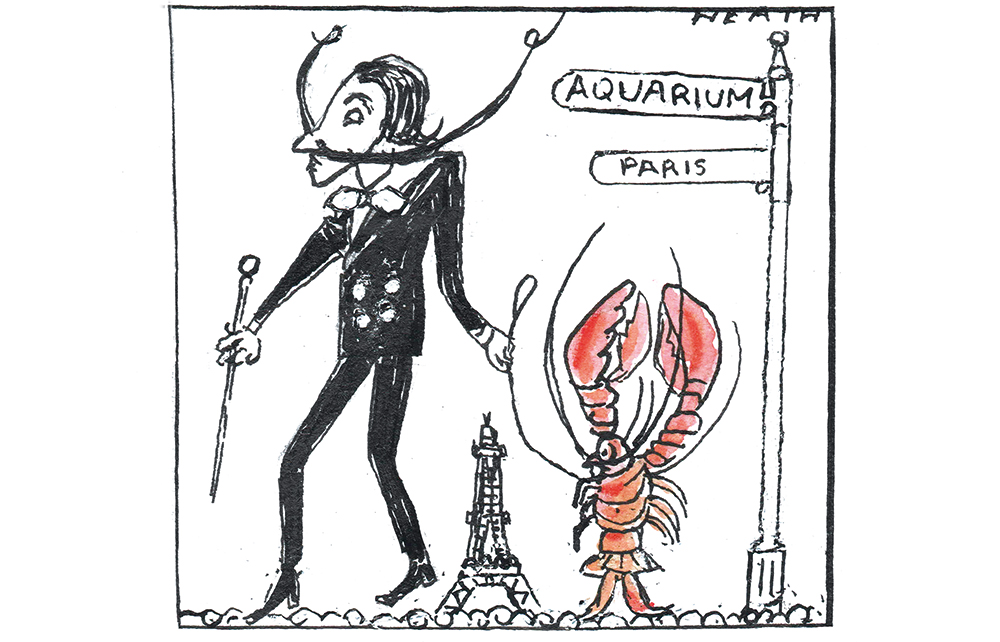The night before I moved a pet lobster into my flat, I ate agnolotti all’ aragosta for dinner. It was possible that my soon-to-be companion, Snips McGee – who I inherited from a friend – would outlive me (the oldest lobster on record was estimated to be 140 years old) and I wanted one last plate of lobster ravioli, hold the moral hang-ups.
The French author Gérard de Nerval also owned a pet lobster, which he took for walks on a blue silk leash. ‘They are peaceful, serious creatures,’ he said. ‘They know the secrets of the sea, they don’t bark, and they don’t gnaw upon one’s monadic privacy like dogs do.’ How I wish that were true. My Snips didn’t bark, but it was hard to find monadic or any other kind of privacy with an infant-sized cockroach by my bed.
Salvador Dali associated lobsters with the bedroom. His lobster-shaped ‘Aphrodisiac Telephone’ was designed to look erotic. In ‘The Dream of Venus’, naked female models are covered with lobsters. He collaborated with Elsa Schiaparelli on the ‘lobster dress’, which was included in Wallis Simpson’s wedding trousseau and worn shortly before her marriage to Edward VIII. Why did he consider lobsters erotic? I shared a bedroom with a lobster and just don’t get it. But such sensuality captivated the Dutch still life painters long before Dali. You’ll find many a ripe red lobster banqueting with skulls and pocket watches in a de Heem or de Ring in the Wallace Collection.
Despite what the TV show Friends might tell you, lobsters don’t mate for life. Female lobsters wield their pheromones feverishly and with little subtlety. She wafts her urine into the alpha male lobster’s domain, seducing him and mating with him for about two weeks before letting the next lady in the line-up repeat the process. What’s more, lobsters excrete from their faces into the faces of their opponents and mates, sending chemically encoded hate mail or love letters.
It’s difficult to see past lobsters’ hard exteriors, but that doesn’t mean they don’t have feelings. ‘We need to look for ways to move beyond our own emotional responses to these animals and instead look at the evidence about what is actually going on in them,’ says Dr Jonathan Birch, a professor at LSE and principal investigator on the Foundations of Animal Sentience project. The project has discovered that several decapod crustaceans, including lobsters, might be sentient based on specific behavioural and neurological criteria. I wonder if this means they could be capable of love, or something like it.
Like star-crossed lovers, Snips and I were of separate worlds. His blue blood belonged in open waters, not a 60-litre tank in my student flat. Out of boredom, misery or perhaps indifference, he crushed his oxygen filter and eventually suffocated. I was grief-stricken – not only because it was more than a century too soon, but because I had loved him. I buried him at sea.
Months later, I indulged in a lobster roll on a trip to the coast. The sun was out, children were playing and I was happy. I considered the conclusion that Dali and de Heem had drawn before: all that’s left to do with the facts of mortality is to savour them.







Comments